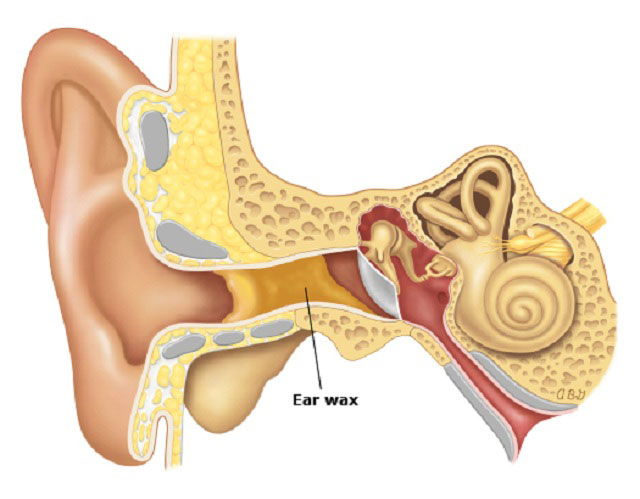No one likes it. It feels uncomfortable and tends to cause problems. However, everything in our body is there for a reason, even if it doesn’t seem very pleasant. If not for urine, for example, we wouldn’t be able to rid the body of harmful waste products.
Earwax is similar and new research is telling us to not get rid of it. It’s known technically as cerumen and is produced by glands in the ear canal. Made up mostly of dead skin cells, it also contains other substances, including lysozyme, an antibacterial enzyme, fatty acids, alcohols, cholesterol, and squalene.
“In fact, it isn’t ‘wax’ at all; it’s a mixture of water-soluble secretions. And although you probably don’t give your earwax much thought, it actually represents one of your body’s most ingenious protective mechanisms.” [1]
The wax of ears prevents our ears from becoming dry and itchy. It keeps the ear lubricated and healthy, protecting the skin of the ear canal. It also traps dirt, which helps prevent bacteria from growing inside the ear and causing infections.
The current medical guidelines are to never use cotton buds, fingers or anything else to remove it. Excess of ear’s wax removes itself from our ears on its own [1,2]. As Allah says, “We have most certainly created humans in the best of fashion” [Qur’an 95:4].

According to the American Academy of Otolaryngology, “Unfortunately, many people mistakenly believe that earwax should be routinely removed for personal hygiene. This is not so. In fact, attempting to remove it with cotton-tipped swabs, bobby pins, or other probing devices can result in damage to the ear, including trauma, impaction of the earwax, or even temporary deafness. These objects only push the wax in deeper and can block the ear canal entirely.” [3]
Even so, there are times when removing it may become a necessity. The UK’s National Health Service (NHS) says it’s important to seek medical attention for [2] earache, hearing loss, ringing in the ears known as tinnitus, itchiness in or around the ear, dizziness, and any ear infections causing pain, fever or temporary hearing loss and balance problems.
The NHS doesn’t recommend trying to remove it on your own. They advise [2]: “Don’t try to remove a build-up of earwax yourself with your fingers, a cotton bud or any other object. This can damage your ear and push the wax further down. If the earwax is only causing minor problems, you can try buying some ear drops from a pharmacy. These can help soften the earwax so that it falls out naturally. There are several different types of eardrops you can use, including those containing sodium bicarbonate, olive oil or almond oil.”
They also urge that if symptoms persist for over five days despite talking to a pharmacist and using natural methods, one should consult their doctor.
Allah shows us different signs in our bodies and in the earth around us about the magnificence of His creation. As Allah says: “We will show them Our signs in the horizons and within themselves until it becomes clear to them that it is the truth” [Quran 41:53].
This article is from Science’s archive and we’ve originally published it on an earlier date.
References:
- Mercola, Joseph DO, Secretion Secrets: Things you didn’t know about Earwax http://articles.mercola.com/sites/articles/archive/2014/03/29/earwax-removal.aspx
- Earwax Buildup, NHS Choices. 2015 http://www.nhs.uk/conditions/earwax/Pages/Introduction.aspx
- Earwax and Care, America Association of Otolaryngology. 2015 http://www.entnet.org/content/earwax-and-care